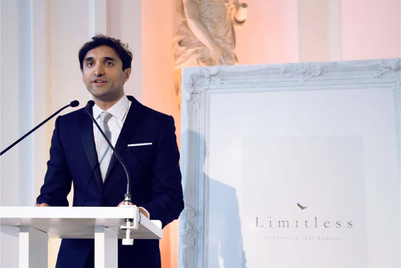
The transaction is expected to be complete by June 2012. Amobee's headquarters will remain in Silicon Valley and its management team, which includes Amobee chief executive officer Trevor Healy, will remain in active control of the company.
SingTel plans to use the acquisition to offer brands access to geo-targeted customised advertising across its 400 million customers in 25 countries. According to a release by SingTel, Amobee complements its abilities with a strong platform that serves ads—banner as well as video—and an experienced team.
Following the group’s restructure, which takes effect on 1 April, and the completion of the acquisition, Amobee will fall under a business unit called ‘group digital life’, headed by Allen Lew, currently CEO of SingTel Singapore. The digital life unit will aim to make the telco a “leading player in the digital ecosystem”, moving it beyond “connecting voices”, according to the company.
Lew, designated as CEO of the new unit said, “The mobile advertising market is nascent and has significant potential for mobile operators, who are able to provide differentiated solutions across smartphones and feature phones, giving brands a better return on their marketing spend. We want to capture that growth in developed and emerging markets, starting with this acquisition.”
Lew will also be acting CEO of another unit, called ‘group ICT’, which combines SingTel’s enterprise-related businesses. SingTel is searching internally and externally to fill the CEO position for that group permanently.
Paul O’Sullivan, who currently heads Optus in Australia, will lead the final unit, ‘group consumer’. This unit consolidates all consumer-related functions and includes the Group’s international business in the emerging markets.
SingTel owns a controlling stake in Optus, which will continue to be headed by O’Sullivan. He will continue to be based in Australia, according to The Australian. Optus Business and its enterprise data services will be absorbed into the group ICT unit.
Lew and O’Sullivan will report directly to group CEO Chua Sock Koong.
The regional restructure is a “bold but necessary move,” commented Nicole McCormick, senior analyst on telco strategy with Ovum. “The group divisional split between consumers and enterprise segments makes sense, and the group digital life unit will need to devise clever bundles and add-ons that take on the OTT [over-the-top] players head-on.”
McCormick added that this is a “direct attempt” by SingTel to leverage its regional footprint and maximise its efforts to disrupt adjacent verticals and other OTT players.
She cautioned, however, that pan-group management across such a diverse and large portfolio will be challenging. “SingTel’s minority stake in many of its subsidiaries will complicate this,” she added. SingTel’s investments include Telkomsel Indonesia, Bharti Airtel India and Globe Telecom in the Philippines.
SingTel’s move into mobile advertising will also be a “slow game”, McCormick said. But by and large, the move to streamline and integrate the group is a strategic move that signals the group’s willingness to adapt to changing times, she concluded.


.jpg&h=334&w=500&q=100&v=20250320&c=1)

.jpg&h=334&w=500&q=100&v=20250320&c=1)
.jpg&h=334&w=500&q=100&v=20250320&c=1)
.jpeg&h=334&w=500&q=100&v=20250320&c=1)




.jpg&h=334&w=500&q=100&v=20250320&c=1)
.jpg&h=268&w=401&q=100&v=20250320&c=1)






.jpg&h=268&w=401&q=100&v=20250320&c=1)